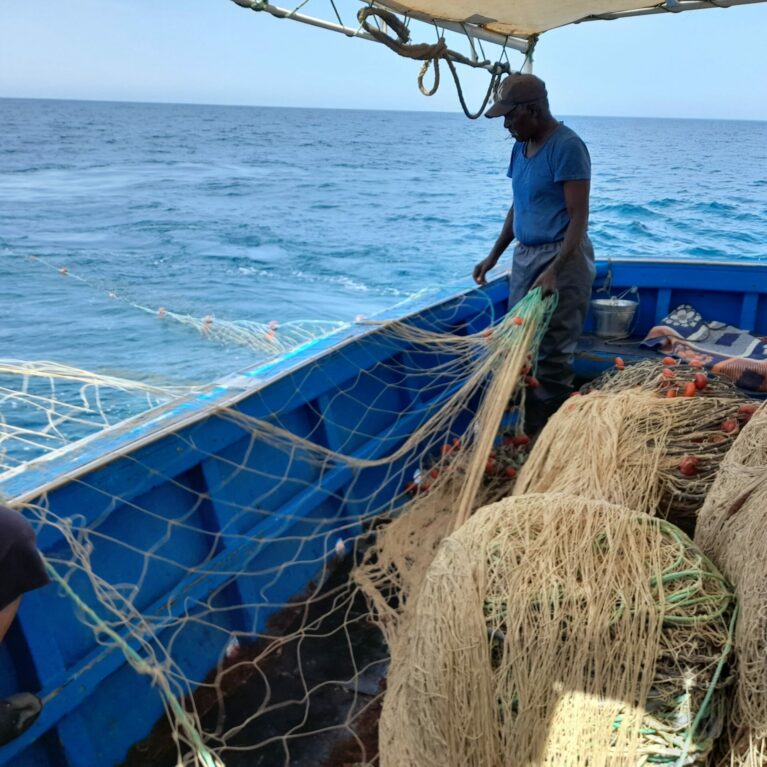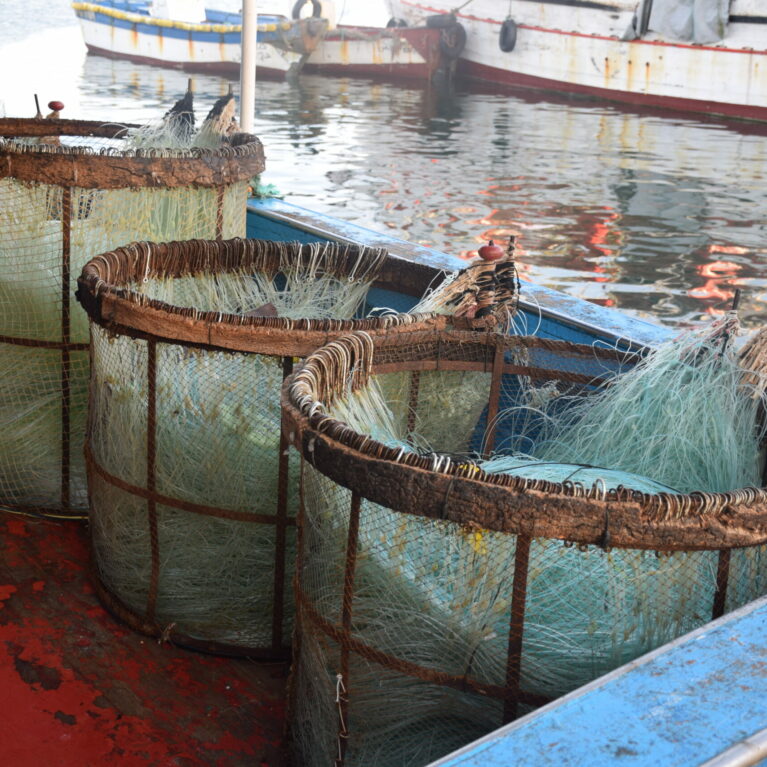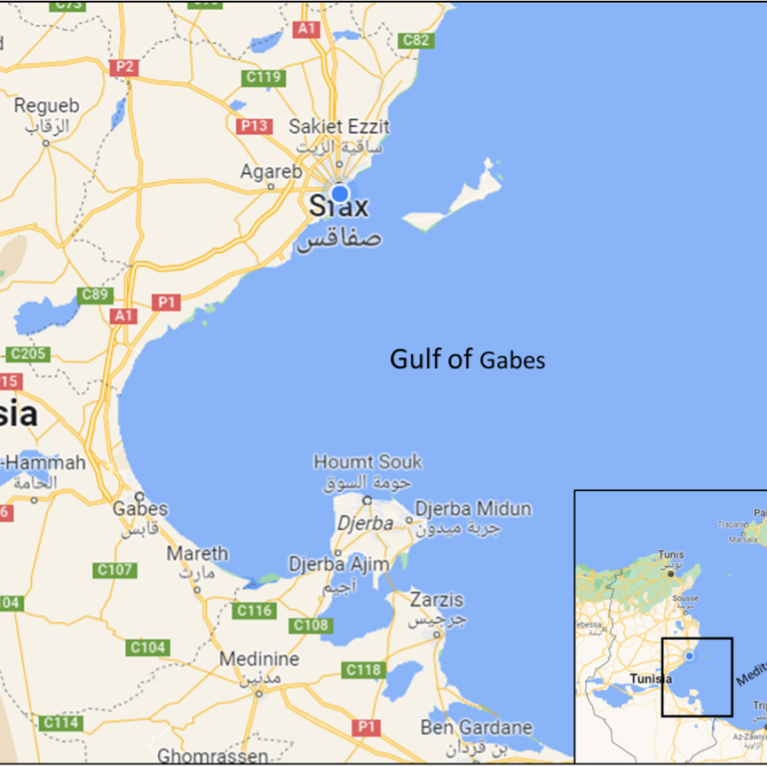Turning the tide for sharks in Tunisia’s Gulf of Gabes
Shark fisheries in Tunisia’s Gulf of Gabes target their catches in the spring and summer when species are moving into shallow waters. But shallow waters are often where sharks breed, pup and feed. Rihab is describing the shark and ray fisheries here and exploring their impact on many vulnerable species, often during their most critical life stages. She will use her insights to develop strategies to protect both young and older sharks when they are most at risk: when they are breeding, when they are pregnant and when they are growing up. Management strategies need to take these different requirements into account for different stages and in different areas.
I am a PhD researcher in marine biology at the Faculty of Science of Sfax and a member of the Marine Biodiversity Laboratory of the National Institute of Marine Sciences and Technologies (INSTM). My studies began with an undergraduate degree in natural sciences in 2018, followed by a Master’s in biodiversity of organisms, populations and environment in 2020. Choosing this particular course relates to my passion for nature and marine ecosystems. Given the problems that face the marine environment, I chose to work on species that are both iconic and endangered: sharks and batoids. I have been studying...



Elasmobranchs conservation in Tunisia: Fisheries and Experiences of mitigation measures.
The aim of this project is to conserve elasmobranch species threatened by targeted fishing and to distribute information and raise awareness among fishermen and local people about sharks. This project examines the problem in a direct and clear way by testing solutions to reduce the catches of vulnerable individuals such as pregnant females and neonates in order to maintain populations. This work is urgently needed to halt declines in populations of elasmobranch species.
The aim of this project is to conserve elasmobranch species threatened by targeted fishing and to distribute information and raise awareness among fishermen and local people about sharks. This project examines the problem in a direct and clear way by testing solutions to reduce the catches of vulnerable individuals such as pregnant females and neonates in order to maintain populations. This work is urgently needed to halt declines in populations of elasmobranch species.
In the Gulf of Gabes, fisheries targeting elasmobranchs are seasonal, operating in spring and summer when the species move to shallow waters. The target species, sandbar shark Carcharhinus plumbeus and guitarfish of the genus Rhinobatos are considered to be endangered. Preliminary data show that the fisheries are active in elasmobranch nursery areas where there is no effective management. Furthermore, analysis of elasmobranch landings suggests a decline in several elasmobranch populations in the area. Effective fishery regulation measures and conservation strategies are required to rectify this situation.
Past experience of shark fisheries indicates that effective management must involve the protection of both young and older members of the population. This project will define the structure of the populations and test a spatio-temporal method that could reduce the impact of fisheries on sharks when they are most vulnerable. We will determine where adults aggregate to mate and where pregnant females give birth. This conservation approach is the easiest to apply since prohibiting fisheries to operate in defined areas over time could protect vulnerable members of the population such as pregnant females and neonates. Moreover, protection of the reproductive potential of populations (groups of breeding females) may be useful in promoting their long-term viability. In addition, management to protect adult females has been applied to many shark species, where measures include the provision of protected areas to preserve the reproductive potential of exploited sharks. This strategy would allow pregnant females to give birth to pups safely, protect newborns and contribute to healthy levels of recruitment. The conservation of these species will be extended by making local fishermen aware of their importance in the ecosystem.
- To identify elasmobranch-specific fisheries and describe their impact on elasmobranch species.
- To test a measure to mitigate the catching of vulnerable stages of maturity.
- To develop management approaches for these fisheries.
- To raise awareness among fishermen about the need to conserve elasmobranchs.
Summary of main research results/outcomes
The study in the Gulf of Gabes, Tunisia, highlights elasmobranch fisheries’ focus on vulnerable species like the Sandbar shark and Guitarfish. Gill-net fishing, notably with “Kallabia”or “Garracia” and “Gattatia,” poses a major threat, capturing pregnant females and neonates frequently. Mitigation trials, particularly depth variation tests, show promise in reducing catches of sensitive maturity stages.
Utilizing distribution maps, we suggest implementing spatial-temporal closures in critical habitats like nursery areas. These closures, enforced during reproductive periods, aim to reduce fishing pressure on vulnerable elasmobranch populations. Restricting access to these zones during sensitive times seeks to foster elasmobranch population recovery and long-term sustainability.

